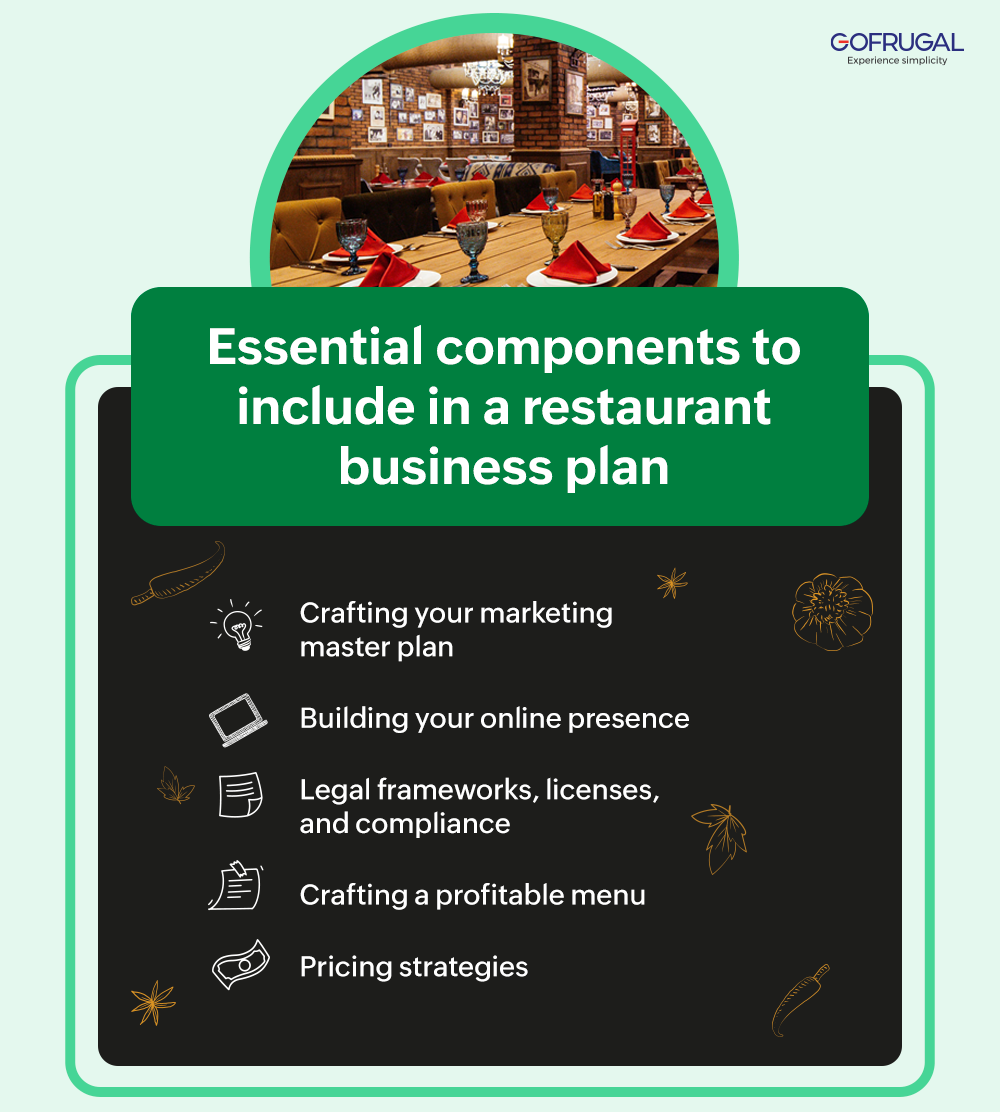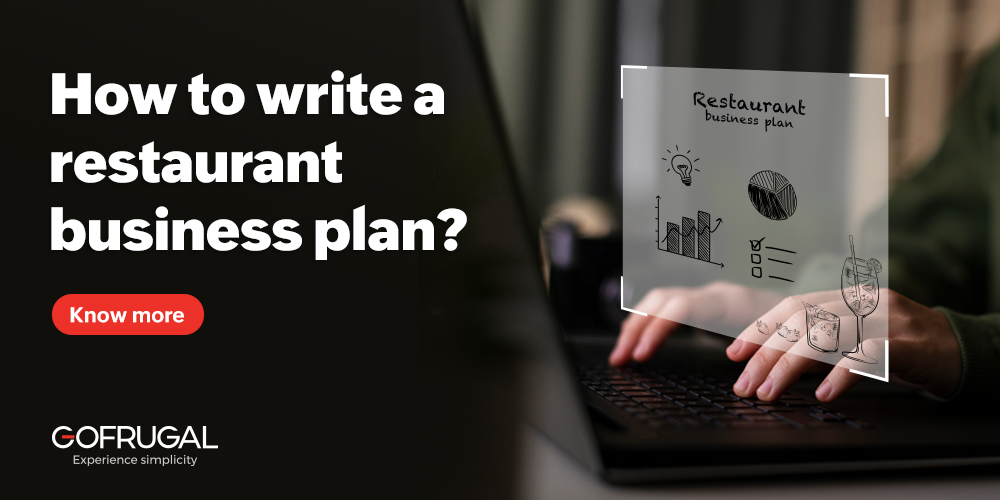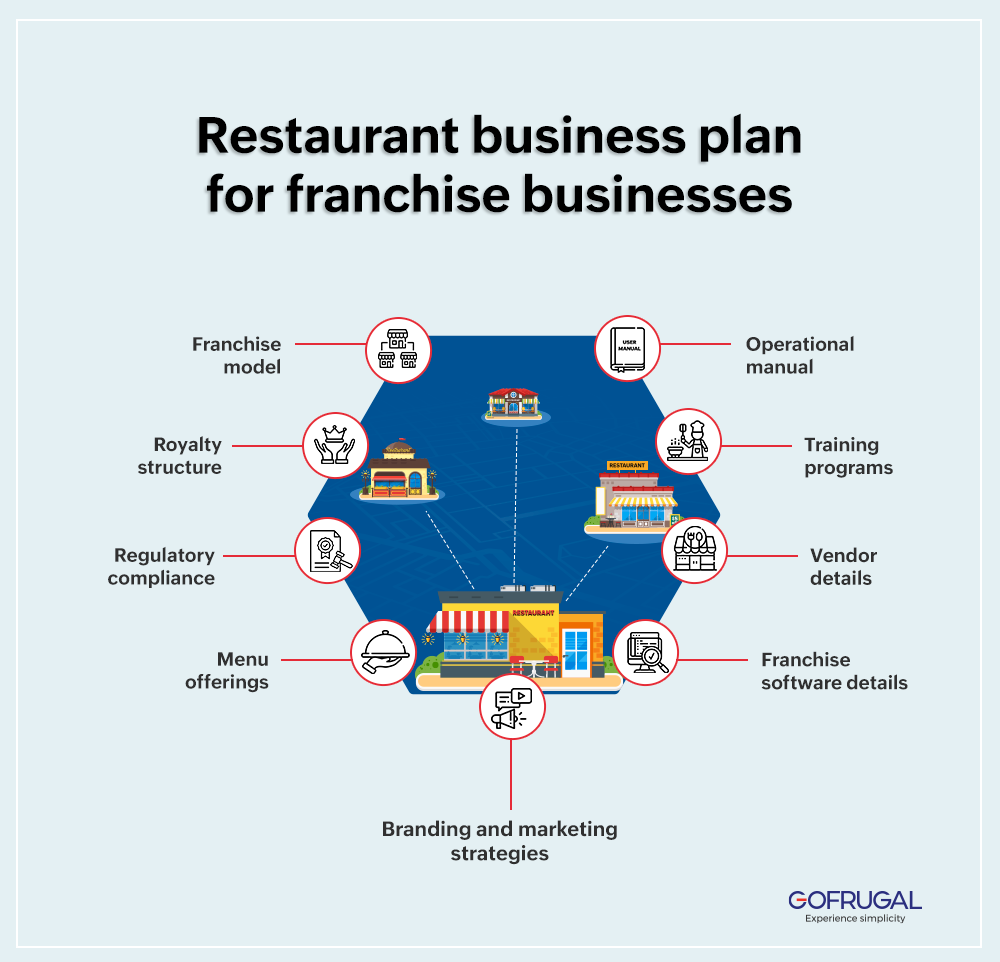If you’re a frequent restaurant patron, you might’ve imagined opening up your own establishment or at least had a brief discussion with your friends about the income a restaurant could generate each month. However, not everyone takes the step to actually follow through on this idea to open their dream restaurant.
If you are one of the few who took the leap to start a restaurant business and want to create the perfect restaurant business plan, you are in the right place. This guide will give you a clear picture of how to write a restaurant business plan.
What is a restaurant business plan and how do you write one?
A restaurant business plan is a comprehensive document that defines your restaurant concept and acts as a roadmap that outlines your restaurant’s operations, finances, target market, ideal customers, marketing plan, and menu pricing. In simple terms, a restaurant business plan is the blueprint for turning your dream restaurant into a reality.
The importance of a restaurant business plan
For building a strong and renowned restaurant business, delicious food and a vibrant atmosphere are essential, but you’ll need a solid foundation to transform your dream into a reality; a well-crafted restaurant business plan is that foundation. Having a restaurant business plan provides increased clarity on your business vision, reduces the risk of failure through careful planning, and helps you adapt to changes in the market. This restaurant business plan is not just a document with goals and a checklist; it is the heartbeat of your dream restaurant and the blueprint for the actual restaurant.
Ideate, refine, and define your restaurant concept: Executive summaries
Your restaurant concept is the heart and soul of your business. It defines your cuisine, atmosphere, target audience, and everything that makes your establishment unique. Predefining the cuisine and the target audience will help you decide on the location and atmosphere of the restaurant. For example, fine dining will have a separate audience and will require a specific ambiance, as will other types of cuisine, so you should clearly ideate and define your restaurant concept.
Understanding the two sides of the restaurant business plan: Internal roadmap and investor document
A successful restaurant business plan wears two hats: the internal roadmap and the investor document.
Internal roadmap: This is a guidebook for keeping all of your restaurant operations on track, including the map of your restaurant, day-to-day activities, financial management, and the promotional plan.
Investor document: A restaurant business plan is also the persuasive document showcasing your concept’s viability, market potential, and financial projections. It not only convinces investors that your restaurant is a worthy investment but also helps them foresee the future of the brand.
Building the pillars
Once you understand what a restaurant business plan is and have an idea of your restaurant concept, it’s time to strengthen the backbone of that plan.
The operational backbone
Financial management: Efficiently plan and manage your restaurant’s budget and revenue, considering the overall expenses, food costs, and profit margins, for accurate financial management and profitability.
Staff management: Identify ways to build a dedicated and strong team from scratch. Staff management starts from hiring employees and goes all the way to assigning stewards to specific tables. Remember, a happy team equals better customer experience in a restaurant.
Inventory and supply chain: Manage inventory, stock transfers, and bill of materials with defined planning. Control food costs and ensure consistent-quality ingredients are available at all times. Streamline the inventory and supply chain processes for better inventory management
Production and quality control: Predefine all your recipes, establish a detailed production plan with a proper BOM, and provide consistent quality throughout the year.
Customer relationship management: Customer loyalty is the key to success for any business, and this is especially true in the restaurant business. Implement smart CRM strategies for personalized interactions and promotions to increase customer retention.
Knowing your audience
- Identifying your target market and ideal customers: Understanding and defining your target market is the only way to create a perfect dining experience for your customers. This includes finding the target demographic, age range, dining habits, and spending power. Perform a complete competitor analysis to assess their strengths and weaknesses and use them to mold your unique selling points for your target.
- Identifying the ideal establishment for your concept: Remember the executive summary and the restaurant concept we discussed initially? This is where it comes in handy. Whether it’s a cozy cafe or a fine-dining restaurant, aligning your concept with the ideal establishment is essential for your restaurant’s success.
Finding your perfect spot
- Choosing the right neighborhood: Your restaurant’s location can make or break its success. Choose a location that aligns with your target audience, offers accessibility and visibility, and has good foot traffic.
- Building, interior design, and ambiance: Creating a memorable dining experience involves more than just the menu. Design an inviting interior and cultivate an ambiance that enhances the overall dining experience. Set your restaurant apart from the competition with the perfect ambiance.
Essential components to include in a restaurant business plan

Crafting your marketing master plan
Marketing is the key for any business to thrive in a competitive market. Create a marketing strategy to capture the customer’s attention and turn them into loyal customers. This includes everything from creative posters and flyers to building your own online store.
Building your online presence
Make good use of social media and food aggregators, build your own online ordering platform, and join revolutionary networks like ONDC network to establish a strong online presence in your locality and serve your customers at their doorstep.
Legal frameworks, licenses , and compliance
Find out all the legal requirements, necessary food business licenses, and permits required for your location and food service operations. Implement industry-standard food safety practices, maintain a clean kitchen, and establish protocols to protect your customers’ health.
Crafting a profitable menu
Draft a menu that speaks for itself. Highlight and position your best dishes and chefs’ specials upfront; create convincing combos; add modifiers and variants for every dish possible; and update the menu based on customer preferences.
Pricing strategies
In a restaurant business, having pricing strategies that strike a balance between value for customers and profitability for your business is crucial for sustainable profits.
Restaurant business plan for franchise businesses
According to a report by CNBC, about 81.5% of fast food chain restaurants are franchised. This supports the fact that aspiring entrepreneurs and restaurant business enthusiasts are seeking a less risky path with a well-structured system built on a proven brand. If you own a restaurant business and are looking to franchise your restaurant, a strong restaurant business plan is a must. The franchise restaurant business plan must include:
- Franchise model
- Royalty structure
- Operational manual
- Training programs
- Regulatory compliance
- Menu offerings
- Vendor details
- Franchise software details
- Branding and marketing strategies
Crafting such a detailed restaurant business plan for franchising your restaurant helps the franchisee easily replicate and create a restaurant business plan for their outlet. If you are a franchisee or a franchisor looking to get into the restaurant franchise business, check out our latest blog on restaurant franchising and how to franchise a restaurant.
Overcoming challenges and moving forward
Challenges in the “on-the-go” plan: An on-the-go plan will not always come in handy in terms of managing the daily operations; it’ll lack timelines, a proper roadmap, and milestone-wise goals and steps to achieve those goals. Instead, it’s wise to draft a restaurant business plan well in advance and learn how to manage time constraints, adapt to changing trends, and overcome common obstacles.
Having a future-ready plan for business expansion: Always be open to exploring new avenues for scaling your business, from opening new locations to diversifying your offerings. The business plan you draft should be good enough to strategize your actions during the potential growth phase of your restaurant. Develop a strategic roadmap that aligns with your long-term vision and goals.
Staying motivated and overcoming obstacles: Running a restaurant business is not a sprint; it’s a marathon. It’s not how fast you get good results but how long you stay in the business fighting the obstacles. Every successful restaurant today has navigated adversity and emerged stronger, so maintain your passion, tap into your resilience, and learn strategies to bounce back from setbacks.
Conclusion
Now it’s time to take things to the next level. As mentioned earlier, not everyone takes the initiative to pursue their passion of opening a restaurant, but you’re doing it! Utilize the valuable resources provided here, equip your business with the best restaurant business plan, and transform your dream into a reality. Grab your apron, ignite your fire, and get ready to chart your course to absolute success!




